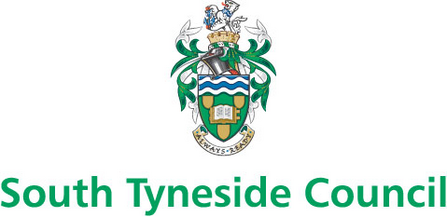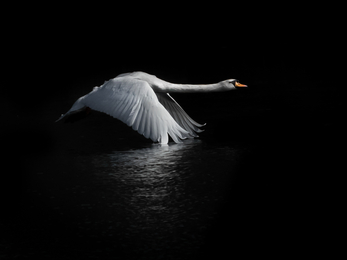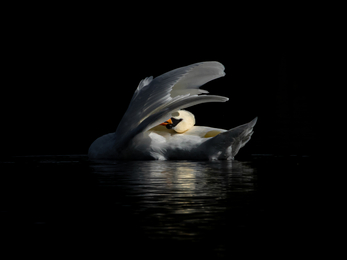The #Healingnature project site of Hetton Lyons in Hetton-le-Hole, sits on a reclaimed former colliery, supporting a lake, mixed woodland and grassland habitats. This site, therefore, hosts an array of wildlife, and what is particularly noticeable is the abundance of waterfowl species, including mute swans, golden eye and past records of garganey (passage migrant), and even a bittern during winter.
The Swans of Hetton Lyons - a photographic journey
Photo by Alexander Permain
Photo by Alexander Permain
As an avid wildlife photographer, I’m always looking for unusual perspectives in photographing a subject that, perhaps, hasn’t been done before. My photography has took me all around the country, from urban red foxes in Suffolk, to seabirds of the Farne Islands, the UK has more wildlife than you may think. That said, most of my photography is done close to home; so why travel the distance if you already have some incredible wildlife right on your doorstep!
In this blog, I will cover a fairly common, but elegant species that of the mute swan Cygnus olor; offering some photographic hints and tips along the way.
What’s in my bag?
First of all, I’d like to talk through what equipment I use. I must say that over the last three years that I have been involved in photography, I have invested a lot of what I have saved in improving my photographic equipment, not only to enhance the photographic capabilities, but also get closer to the wildlife through a longer lens. Don’t come to the conclusion that photography requires substantial financial investment, because that certainly is not the case. Although it does help having fancy equipment, it’s not a deal breaker. Here is the list of the camera equipment below that I take with me when photographing the swans.

Fieldcraft
If you talk to any wildlife photographer about how they take their images, one of the first things they’ll say is that they understand the subject. What does this mean? Well, wildlife you see, will have a favourite pond, lake, or even perch. In visiting Hetton Lyons, I already know that swans are there, and therefore I can generate a greater understanding of their behavioural habits, such as their preening and their aggressive posture, which you may notice when they pull their neck back and fluff up their wings into an arc shape. From these observations, I can then locate better photographic spots to capture this behaviour and something more unique.
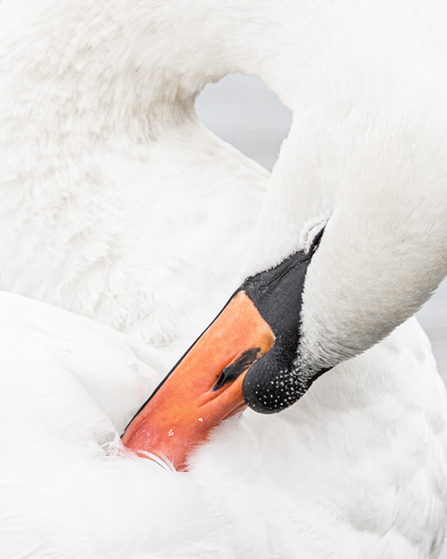
Photo by Alexander Permain
Surprisingly, clothing also comes into the fieldcraft category. As a rule of thumb, to minimise disturbance to wildlife and to ensure that they are not aware of your presence, more subdued, monotone and camouflage clothing is often necessary. That said, swans and other wetland birds particularly in urban areas, are quite accustomed to human presence, and therefore are rarely put off. Even so, it is still good practice.
Working with light
Before photographing the swans, I normally try to plan in advance where possible, and take note of the weather forecast to come. I’m sure you will agree that walks out around your local nature reserve are more pleasant on sunnier days. For photography, this is no different. A day with intense sunshine opens up many more creative photographic opportunities. Below I will show you some images taken during the early afternoon sun.
Where’s the sunshine? Although these images deceivingly look like they were taken at night with a flash, they are in fact taken in broad daylight. Cameras are rarely perfect, no matter how much they cost. Under these conditions, I often use the limitations of my cameras sensor, and with the sun shining directly onto subject, and for these particular shots, I under-exposed the exposure value (EV) on my camera to -2.7 EV. Thus, creating a spotlight effect, dramatising the shot. I always find black backgrounds effective with swans; the contrast in colours really isolates the subject from the surroundings, letting you appreciate every detail of the swan.
That said, cloudy days do offer the opportunity to get detailed close-ups, or perhaps wide-angle shots, without the worry of over-exposing, or ‘burning out’ the whites in the swan from the sunshine.
Composition
Composition is a fundamental part of photography, to which wildlife photographers often work in conjunction with the ‘rule of thirds’. This screengrab from my editing catalog with the gridlines emphasises the rule of thirds. Generally, we look to frame an image so that the subject is on the left or the right side of the gridlines, leaving what we call ‘negative space’. I.e. breathing space for the image; removing any doubt that there is too much going on in the image – that is a ‘busy’ image!
Photo by Alexander Permain
However, the rules are there to be broken. The most important takeaway message from this blog is that photography is subjective. Images you take should be for you, and you only. Many competition winners come from an un-planned image, and as wildlife is often unpredictable, this is even more relevant. For me, visiting Hetton Lyons, one of our Healing Nature project sites, allows me to experiment with different photographic techniques, spending a good amount of time there to do so. Yet, it is often nice to take your eyes away from the camera and all technology to take a mindful minute or two in order to appreciate the sights and sounds of the wildlife around you.
See more of Alex’s wildlife photography at www.alexanderpermain.com
Healing Nature is a Green Recovery Challenge Fund and Partner funded project.
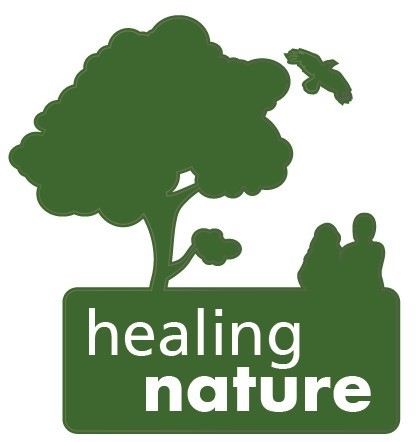
Follow our Blog to keep updated with all things #HealingNature and contact us to learn how you can get involved with our project.
Email: healingnature@durhamwt.co.uk
Facebook: @DurhamWildlifeTrust
Twitter: @DurhamWildlife
Instagram: @Durhamwildlife
Helpful links
https://www.youtube.com/watch?v=3eVjUrY9a9c exposure value explained.



